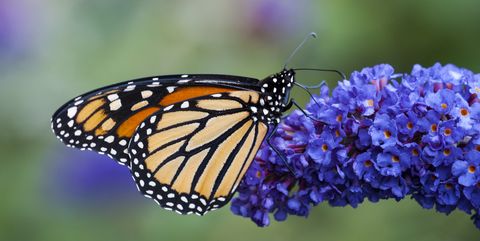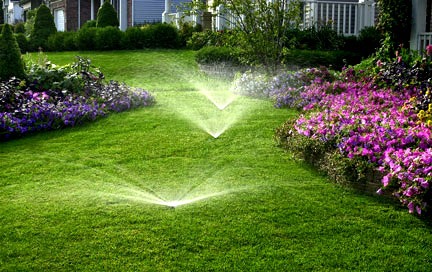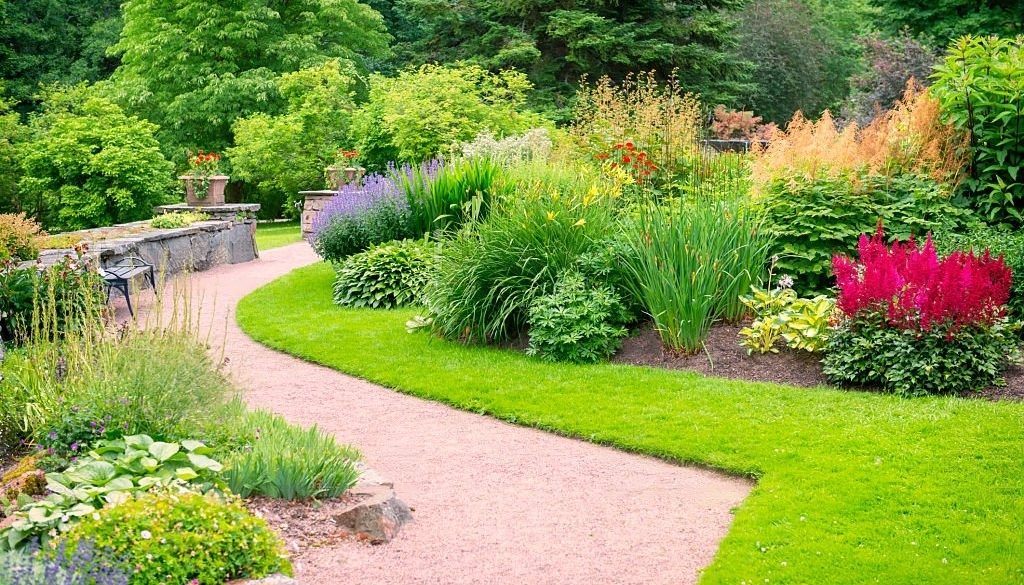Embrace Native Plants for Low-Maintenance Beauty
Creating a low-maintenance garden that offers year-round beauty doesn’t have to be a daunting task. One of the most effective strategies is to embrace native plants. Native plants are those that occur naturally in your region, having adapted over time to the local climate and soil conditions. This adaptation makes them incredibly resilient and less susceptible to pests and diseases, significantly reducing the need for chemical treatments and intensive care.
Moreover, native plants require far less water than their non-native counterparts, aligning perfectly with the principles of drought-tolerant landscaping. This not only conserves a precious resource but also saves you time and money, further contributing to the low-maintenance appeal of your garden. By incorporating native plants, you’re also supporting local wildlife, providing essential habitats for birds, bees, butterflies, and other beneficial creatures. This biodiversity adds another layer of beauty and interest to your garden, making it a vibrant and lively space.
When selecting native plants, consider a mix of trees, shrubs, perennials, and grasses to create a diverse and visually appealing landscape. Look for species that offer a variety of textures, colors, and blooming periods to ensure your garden remains attractive throughout the year. Consulting with a local nursery or a landscape professional who specializes in native plantings can provide valuable insights and recommendations tailored to your specific area and needs.
Embracing native plants is a smart choice for anyone looking to design an easy-care garden. Not only do they reduce maintenance efforts, but they also enhance the ecological value of your outdoor space, making it a win-win solution for low-maintenance landscaping.
Invest in Perennial Flowers for Year-Round Color
Perennial flowers are the cornerstone of any low-maintenance landscaping plan. Unlike annuals, which need to be replanted each year, perennials come back season after season, offering a sustainable solution for year-round color and interest in your garden. By carefully selecting a variety of perennials that bloom at different times of the year, you can create a vibrant tapestry that evolves from spring through fall.
One of the key benefits of incorporating perennial flowers into your landscape is their hardiness. Many perennials have deep root systems that make them more drought-tolerant and less susceptible to the fluctuations of the weather. This resilience translates into less watering, feeding, and overall care required from you. Easy-care garden plants like lavender, sedum, and echinacea not only provide beautiful blooms but also attract pollinators, adding an extra layer of life to your garden.
When planning your perennial garden, consider the specific needs of each plant in terms of sunlight, water, and soil type. Grouping plants with similar requirements together can make maintenance easier and more efficient. Additionally, investing in a good layer of mulch around your perennials can help retain soil moisture, suppress weeds, and reduce the need for frequent watering.
For those seeking a low-maintenance garden design, incorporating perennial ground cover can be a game-changer. Varieties such as creeping thyme, vinca, and ajuga not only add color and texture to your garden but also help prevent soil erosion and weed growth, further reducing the need for maintenance.
In conclusion, by investing in perennial flowers, you can achieve a beautiful, dynamic garden that requires minimal upkeep. This approach not only saves time and effort but also contributes to a more sustainable and eco-friendly outdoor space.

Utilize Mulch for Weed Control and Soil Health
Mulch is a gardener’s best friend when it comes to creating a low maintenance landscape. Not only does it significantly reduce the growth of unwanted weeds, but it also plays a crucial role in maintaining soil health. By covering the soil with a layer of mulch, you create a barrier that prevents weed seeds from reaching the soil and germinating. This means less time spent weeding and more time enjoying your garden.
But the benefits of mulch extend beyond weed control. Mulch helps to retain soil moisture, reducing the need for frequent watering. This is particularly beneficial in drought-prone areas where water conservation is a priority. By maintaining a moist environment, mulch also encourages the development of a healthy soil ecosystem, rich in beneficial microorganisms and nutrients. This improved soil structure supports plant health, leading to more robust and resilient garden plants.
There are various types of mulch to choose from, including organic options like wood chips, straw, and compost, as well as inorganic options like rubber or gravel. Organic mulches have the added advantage of breaking down over time, further enriching the soil with organic matter. When selecting mulch, consider the aesthetic appeal in addition to the functional benefits, as mulch can significantly impact the overall look of your garden.
Incorporating mulch into your landscaping strategy is a simple yet effective way to achieve a beautiful, low-maintenance garden. By suppressing weeds, conserving water, and enhancing soil health, mulch lays the foundation for a thriving garden that requires minimal effort to maintain. Embrace the power of mulch and transform your outdoor space into an easy-care haven.
Incorporate Drought-Tolerant Landscaping for Water Efficiency
Embracing drought-tolerant landscaping is a transformative approach to creating a beautiful, low-maintenance garden that thrives even in water-scarce environments. This method, often referred to as xeriscaping, involves selecting plants that require minimal water, thereby reducing your garden’s dependency on frequent irrigation. The beauty of drought-tolerant landscaping lies not only in its water efficiency but also in its ability to offer a diverse palette of textures, colors, and forms, bringing dynamic visual interest to your outdoor space without the high maintenance.
When planning your drought-tolerant landscape, consider incorporating a variety of easy-care garden plants such as succulents, which store water in their leaves and can survive with minimal watering. Lavender, with its fragrant purple blooms, and Sedum, known for its hardy, drought-resistant nature, are excellent choices for adding year-round color and interest. These plants not only conserve water but also attract pollinators, adding an eco-friendly dimension to your garden.
Another aspect of drought-tolerant landscaping is the strategic use of mulch and hardscaping elements like stones and gravel. These materials help retain soil moisture, reduce evaporation, and suppress weed growth, further decreasing the need for maintenance. By integrating these elements, you create a low maintenance garden design that is both aesthetically pleasing and environmentally sustainable.
Opting for drought-tolerant landscaping doesn’t mean sacrificing beauty for practicality. With careful selection and placement of drought-resistant plants and materials, you can achieve a stunning outdoor space that requires minimal water and upkeep. This approach not only aligns with water conservation efforts but also provides a solution for homeowners seeking an attractive, easy-care garden that flourishes year after year.

Choose Hardy Ground Covers for Easy Ground Management
When it comes to low maintenance landscaping, selecting the right ground covers can significantly reduce your gardening workload. Hardy ground covers are an excellent choice for homeowners and property managers seeking an attractive yet easy-care garden. These plants spread across the soil, creating a dense mat that suppresses weeds, reduces soil erosion, and adds a lush, green appearance to your outdoor space with minimal effort.
Perennial ground cover varieties, in particular, offer year-round color and texture to your garden without the need for annual replanting. From the vibrant hues of Sedum to the delicate foliage of Thyme, these plants provide a continuous display of beauty. Moreover, many ground covers are drought-tolerant, making them ideal for low-maintenance, water-efficient landscapes. By incorporating these easy-care garden plants, you can enjoy a vibrant garden without the constant upkeep.
Another advantage of using hardy ground covers is their ability to thrive in a variety of soil types and conditions. Whether your garden is sunny, shaded, dry, or moist, there’s a ground cover that can adapt to your specific environment. This versatility makes them a valuable component in any low maintenance garden design.
For those seeking no-mow lawn alternatives, certain ground covers can serve as a lush, green carpet that requires little to no mowing. This not only saves time but also contributes to a more sustainable landscape by reducing the need for gas-powered lawn equipment.
In conclusion, incorporating hardy ground covers into your landscaping is a smart choice for anyone looking to create an easy-care, aesthetically pleasing outdoor space. By choosing the right varieties, you can enjoy a beautiful, low-maintenance garden that meets your lifestyle needs and environmental concerns.
Opt for Artificial Grass for a Lush Lawn Without the Hassle
Transitioning to artificial grass is a game-changer for those seeking a pristine lawn without the constant upkeep. This innovative solution caters to the modern homeowner’s desire for both aesthetic appeal and practicality, eliminating the need for mowing, watering, and fertilizing. Artificial grass, often indistinguishable from its natural counterpart, offers a lush, green landscape year-round, regardless of weather conditions. Its durability withstands heavy foot traffic, making it ideal for families and pet owners. Moreover, it serves as a no-mow lawn alternative, aligning perfectly with the principles of low maintenance garden design.
Investing in artificial grass contributes significantly to water conservation efforts, a core aspect of drought-tolerant landscaping. This is particularly beneficial in regions where water scarcity is a concern, allowing homeowners to maintain a verdant lawn without straining local water resources. Additionally, artificial grass eliminates the need for harmful pesticides and fertilizers, promoting a safer environment for both wildlife and humans. Its ease of installation and versatility make it suitable for various outdoor spaces, from gardens to patios, offering a seamless blend of functionality and style.
While the initial cost may be higher than that of natural sod, the long-term savings on water bills, lawn care products, and maintenance services make artificial grass a cost-effective solution. It embodies the essence of easy-care garden plants by requiring minimal effort to maintain its beauty. For those looking to simplify their outdoor maintenance while ensuring their lawn remains inviting and vibrant, opting for artificial grass is a wise choice. It stands as a testament to the innovative solutions available in the realm of low maintenance landscaping, offering a hassle-free alternative to traditional grass that aligns with the modern lifestyle.

Create a Rock Garden for a Unique, Low-Care Feature
Rock gardens offer a distinctive solution to the quest for a low-maintenance yet visually appealing landscape. By incorporating various sizes and colors of rocks, stones, and pebbles, alongside drought-tolerant plants and succulents, homeowners can create a captivating garden space that requires minimal upkeep. This landscaping approach not only adds texture and interest to your outdoor area but also significantly reduces the need for regular watering, weeding, and pruning.
Designing a rock garden is an opportunity to showcase creativity while embracing easy-care garden plants that thrive in rocky environments. Plants such as sedums, sempervivums, and other succulents are ideal companions for rock gardens due to their drought tolerance and low maintenance needs. These plants adapt well to the drainage provided by rocky soil, making them perfect for this type of landscape. Additionally, incorporating perennial ground cover can add splashes of color throughout the year, further enhancing the visual appeal of your rock garden without increasing its care requirements.
Rock gardens are not only practical for those seeking no-mow lawn alternatives but also serve as a unique feature that can elevate the overall design of your outdoor space. By carefully selecting rocks and plants that complement each other and your existing landscape, you can create a serene and picturesque garden area. Moreover, rock gardens are an excellent choice for areas of your yard that are difficult to cultivate or where traditional lawns struggle to thrive.
In conclusion, a rock garden is a superb option for anyone looking to introduce a low maintenance garden design that doesn’t sacrifice beauty for ease of care. It’s a sustainable, water-efficient landscaping solution that offers year-round interest and becomes a focal point of your outdoor living space.
Install a Drip Irrigation System for Efficient Watering
One of the most effective strategies for maintaining a low-maintenance landscape is to install a drip irrigation system. This method of irrigation is not only water-efficient but also ensures that water is directly delivered to the roots of plants, where it’s most needed. Unlike traditional sprinkler systems that can waste water through evaporation and runoff, drip irrigation minimizes waste, making it an ideal choice for those looking to create an easy-care garden while also being mindful of water conservation.
Drip irrigation systems are particularly beneficial for gardens featuring drought-tolerant landscaping and perennial ground covers. These systems can be customized to meet the specific water needs of different plants, ensuring that each plant receives the right amount of water without over or under-watering. This targeted watering approach supports healthy plant growth and vibrant colors in your garden year-round, contributing to the overall aesthetic appeal of your outdoor space with minimal effort.
Moreover, installing a drip irrigation system can significantly reduce the time and labor involved in garden maintenance. Once set up, the system automates the watering process, freeing up time that would otherwise be spent manually watering plants. This makes it an excellent solution for homeowners and property managers seeking no-mow lawn alternatives and low maintenance garden designs that don’t sacrifice beauty for ease of care.
Incorporating a drip irrigation system into your landscaping plan is a smart investment towards creating an easy-care garden. It not only enhances the health and beauty of your plants but also contributes to a more sustainable and water-efficient garden design. Whether you’re integrating drought-tolerant plants, perennial ground covers, or any other easy-care garden plants, a drip irrigation system can help you achieve a lush, low-maintenance landscape that thrives with minimal intervention.
Use Container Gardening for Flexible, Effortless Greenery
Container gardening stands out as a versatile and straightforward approach to cultivating a vibrant garden without the extensive maintenance traditional landscaping demands. This method allows homeowners and property managers to introduce a variety of easy-care garden plants into their outdoor spaces, regardless of the ground conditions. By selecting the right containers and plant species, you can create an appealing aesthetic that requires minimal upkeep.
One of the key benefits of container gardening is its flexibility. Containers can be moved to optimize plant health, taking advantage of the best light conditions or protecting plants from harsh weather. This mobility also means you can easily change your garden’s layout, making it simple to refresh your outdoor space’s look without the need for significant redesign or physical labor.
When choosing plants for your containers, focus on drought-tolerant landscaping options and perennial ground covers that thrive in confined spaces. These plants typically require less water and are more resistant to pests and diseases, further reducing the need for maintenance. Succulents, herbs, and certain flowering perennials are excellent choices for an easy-care garden that brings year-round color and interest.
Incorporating no-mow lawn alternatives and other low maintenance garden design elements into your container gardening can also enhance your outdoor area’s appeal while minimizing labor. By selecting the right containers and combining them with strategic plant choices, you can create an effortlessly beautiful garden that aligns with the desire for a low-maintenance yet aesthetically pleasing outdoor space.
Incorporate Hardscaping for Reduced Lawn Care Duties
Transforming your outdoor space into a low-maintenance haven doesn’t just stop at selecting the right plants. An often overlooked but equally crucial element is the strategic use of hardscaping. Hardscaping refers to the non-living elements of landscaping, such as patios, walkways, retaining walls, and decks. These features not only add aesthetic appeal and functionality to your garden but significantly reduce the amount of lawn you need to care for, making your outdoor space easier to maintain.
One of the primary benefits of incorporating hardscaping into your garden design is the reduction of lawn area. Grass requires regular mowing, watering, and fertilizing to stay healthy and attractive. By replacing some of your lawn with hardscape elements, you can enjoy a stylish outdoor area with far less effort. For instance, a spacious patio provides a perfect spot for outdoor dining and relaxation, while gravel paths can create charming walkways through your garden, both eliminating the need for grass in those areas.
Moreover, hardscaping can help solve common landscaping challenges. Retaining walls can prevent soil erosion in sloped gardens, while strategically placed stones and pavers can improve drainage, reducing waterlogged areas and the need for complex irrigation systems. Additionally, hardscape features are durable and long-lasting, requiring minimal upkeep compared to living landscape elements.
When planning your hardscaping, consider materials that complement your home’s exterior and the natural surroundings to create a cohesive look. Whether you opt for natural stone, pavers, or concrete, these elements can significantly enhance the beauty and functionality of your garden while keeping maintenance to a minimum. By incorporating hardscaping into your landscape design, you can achieve an easy-care garden that doesn’t sacrifice style or enjoyment.
